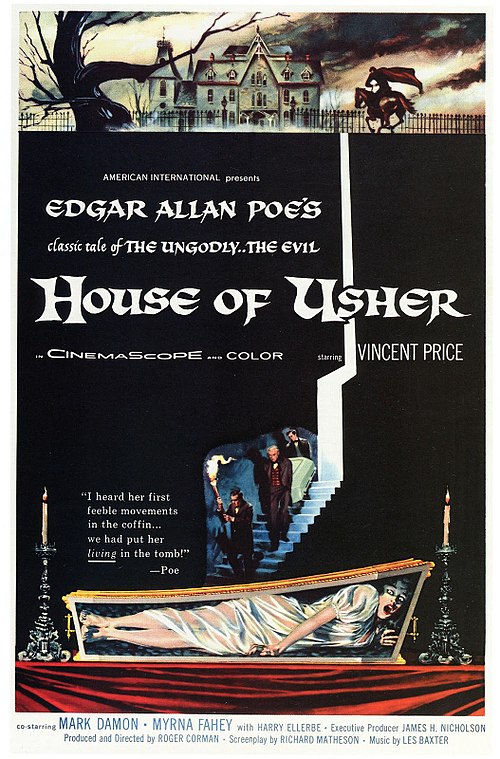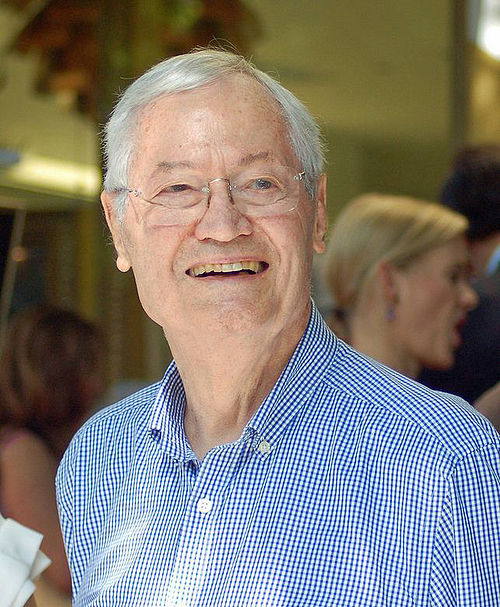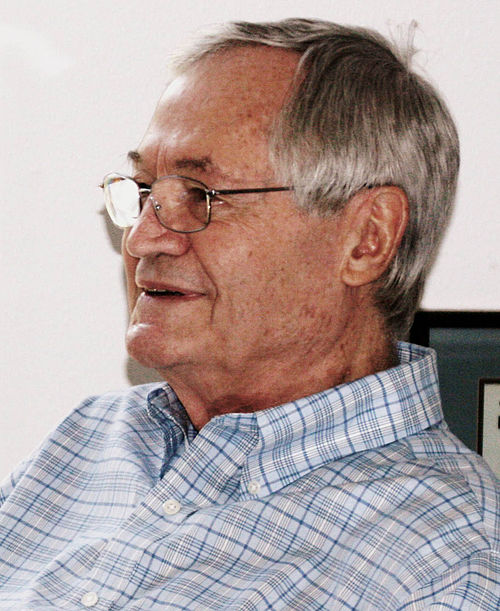House of Usher (film)
Videos
Page
House of Usher is a 1960 American gothic horror film directed by Roger Corman and written by Richard Matheson from the 1839 short story "The Fall of the House of Usher" by Edgar Allan Poe. The film was the first of eight Corman/Poe feature films and stars Vincent Price, Myrna Fahey, Mark Damon and Harry Ellerbe.

Theatrical release poster by Reynold Brown
Roger Corman
Videos
Page
Roger William Corman is an American film director, producer, and actor. Known under various monikers such as "The Pope of Pop Cinema", "The Spiritual Godfather of the New Hollywood", and "The King of Cult", he is known as a trailblazer in the world of independent film. Many of Corman's films are low-budget cult films including some which are adapted from the tales of Edgar Allan Poe.

Corman in Hollywood, 2012

Corman in 2006

Drive-in advertisement from 1957 for the double feature, Attack of the Crab Monsters and Not of This Earth. Corman films were popular on the drive-in circuit, and generally marketed towards a teenage audience.

Barboura Morris and Susan Cabot in a scene from The Wasp Woman (1959)